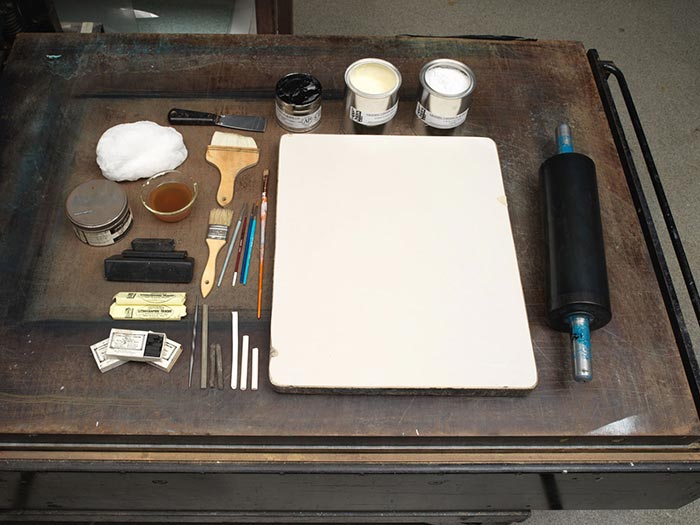Mud S. -- De Great Record Buster: "Dar! She's done gone bust dat yer reckud agin!"
Publisher Currier & Ives American
Not on view
The late nineteenth-century Darktown prints by Currier & Ives depict racist stereotypes that are offensive and disturbing.The Metropolitan Museum of Art preserves such works to shed light on their historical context and to enable the study and evaluation of racism.
This Darktown racing scene shows a side view of Mud S., a wild-eyed brown mule (with all its legs off the ground) straining to race towards the right. As the mule pulls a makeshift two-wheeled cart with a chair tipping backwards, a Black (African-American) driver stands with his bare feet on the animal's rump. He clutches the taut reins, and a riding crop is clenched by his teeth. His blue cap with a long yellow visor is tied to his head via a white handkerchief; he wears a blue jacket with tattered edges, and patched yellow/black polka dot pants. A crowd cheers in the background; many have their arms upraised and several tossed hats are in the air. In the right background, two Black men embrace in the judge's stand. The title and caption are imprinted in the bottom margin.
The print's title provides a clue that this print is a spoof of a celebrated American harness racing racehorse, named Maud S.. Between 1880 and 1885, Maud S. (a chestnut mare) was a multiple world record holder for the fastest harness racing times. Shortly before she was retired as a racehorse in 1885, she ran the mile race in 2:08 3/4 minutes. William H. Vanderbilt was her owner from 1878 to 1884, when he sold the horse to Robert Bonner.
Nathaniel Currier (1813–1888), whose successful New York-based lithography firm began in 1835, produced thousands of prints in various sizes that together create a vivid panorama of mid-to-late nineteenth century American life and its history. People eagerly acquired such lithographs featuring picturesque scenery, rural and city views, ships, railroads, portraits, hunting and fishing scenes, domestic life and numerous other subjects, as an inexpensive way to decorate their homes or business establishments. As the firm expanded, Nathaniel included his younger brother Charles in the business. In 1857, James Merritt Ives (1824–1895), the firm's accountant since 1852 and Charles's brother-in-law, was made a business partner. Subsequently renamed Currier & Ives, the firm continued via their successors until 1907.

